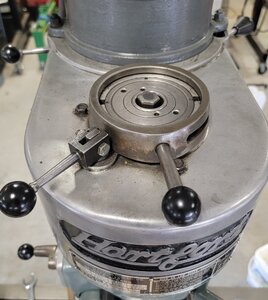Just acquired a new to me Hartford Mill. I do not have access to 3ph power - only 110/220 so I can't actually run the machine yet.
Here is a quick link to the original thread about finding a good mill.
https://canadianhobbymetalworkers.com/threads/where-to-get-good-used-mill.3372/
Here is a link to the Bridgeport mill I acquired at the same time.
https://canadianhobbymetalworkers.com/threads/new-to-me-bridgeport-mill.3491/
Here is a quick survey of the mill and its condition as received:
Shyehorng Machine Tool
Taiwan
Imported by Clarkson
Machinery
Model 2S
Serial Number 792216 (also on casting Frt)
Date 1979 12 5
Motor 550V 3ph 2HP 1720rpm
20 thou x-axis over length
9 thou y-axis over length
Oil pump works
Y slides good condition, Ways ok, Gibbs good
X slides good condition, Ways ok, Gibbs good
Z slides good condition, Ways ok, Gibbs good
Bed looks good with a few peck marks
Not evaluated for flatness or raised bumps
Left Side
Forward/Back tilt
missing 25° limit pin
Head centered front to rear
Head Offset to right
V-Belt Wierd
Chips inside base?
Chalk mark looks like
auction lot number
Right side
What does top cam do?
What does top lock do?
Front
Table Lift lever is home
made but works
Table Lift lock not effective
Spindle lock doesn't work
No way to clamp R8
tools to tighten draw bar
Top
Draw bar has been
hammered on
Would not fit 3/4 socket
Fixed with tool grinder
Why? What else is
damaged/broken
Spindle
Rotates freely/smoothly
R8 key pin present but
loose
Hole at back of quill cap
Missing Allen screw
Here are some photos:













Here is a quick link to the original thread about finding a good mill.
https://canadianhobbymetalworkers.com/threads/where-to-get-good-used-mill.3372/
Here is a link to the Bridgeport mill I acquired at the same time.
https://canadianhobbymetalworkers.com/threads/new-to-me-bridgeport-mill.3491/
Here is a quick survey of the mill and its condition as received:
Shyehorng Machine Tool
Taiwan
Imported by Clarkson
Machinery
Model 2S
Serial Number 792216 (also on casting Frt)
Date 1979 12 5
Motor 550V 3ph 2HP 1720rpm
20 thou x-axis over length
9 thou y-axis over length
Oil pump works
Y slides good condition, Ways ok, Gibbs good
X slides good condition, Ways ok, Gibbs good
Z slides good condition, Ways ok, Gibbs good
Bed looks good with a few peck marks
Not evaluated for flatness or raised bumps
Left Side
Forward/Back tilt
missing 25° limit pin
Head centered front to rear
Head Offset to right
V-Belt Wierd
Chips inside base?
Chalk mark looks like
auction lot number
Right side
What does top cam do?
What does top lock do?
Front
Table Lift lever is home
made but works
Table Lift lock not effective
Spindle lock doesn't work
No way to clamp R8
tools to tighten draw bar
Top
Draw bar has been
hammered on
Would not fit 3/4 socket
Fixed with tool grinder
Why? What else is
damaged/broken
Spindle
Rotates freely/smoothly
R8 key pin present but
loose
Hole at back of quill cap
Missing Allen screw
Here are some photos:

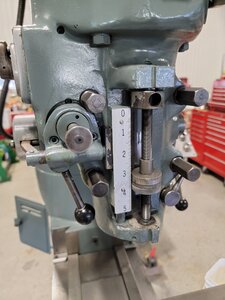


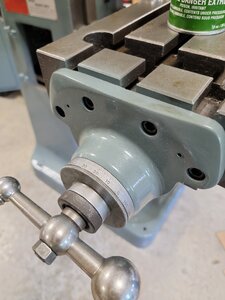
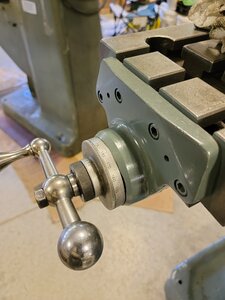
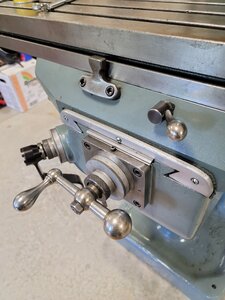
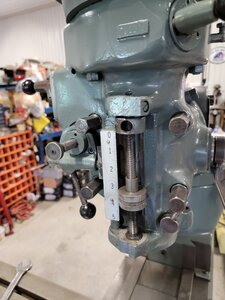


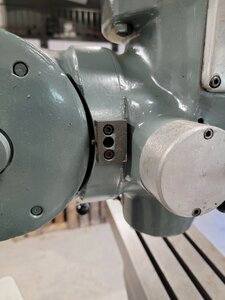
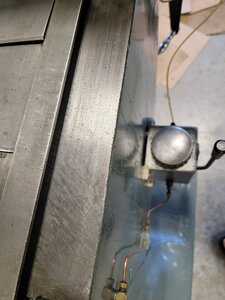
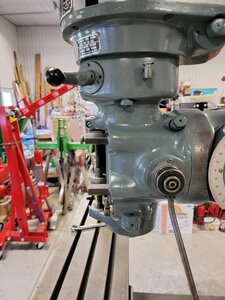
Last edited:

